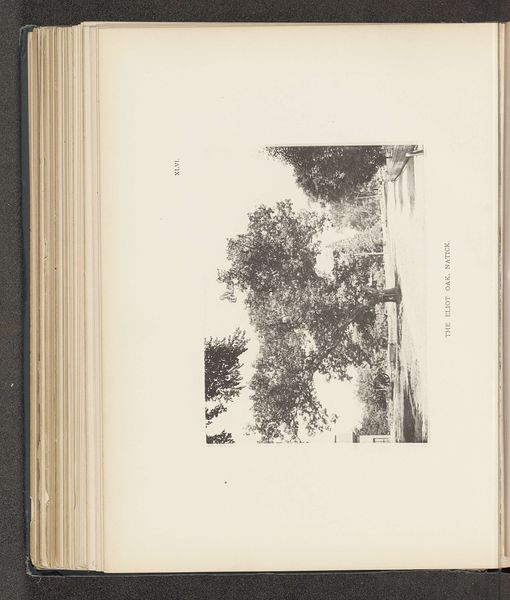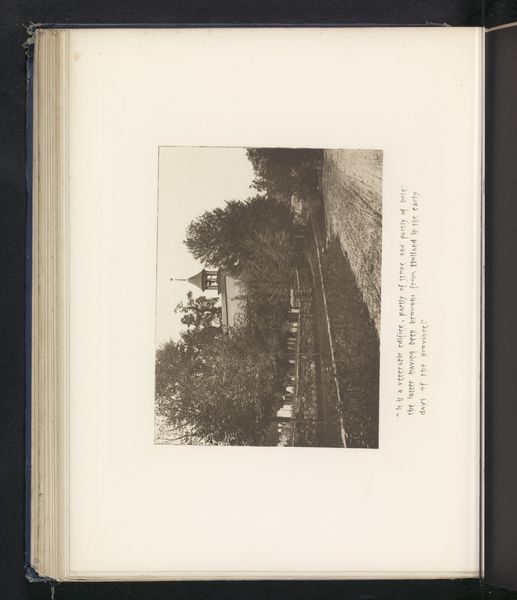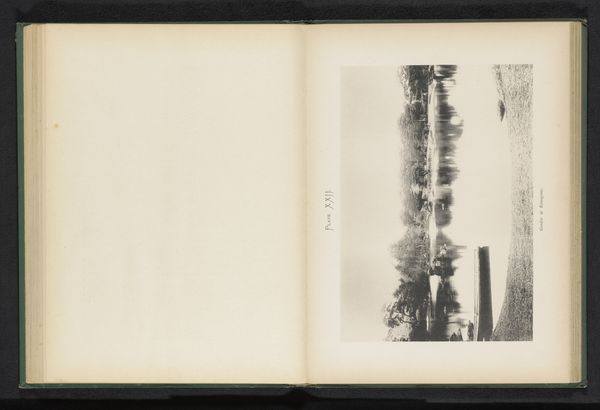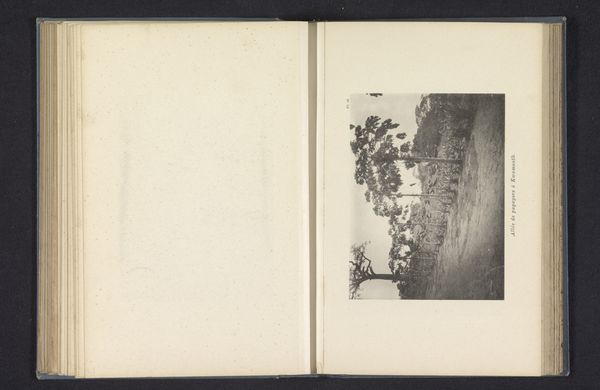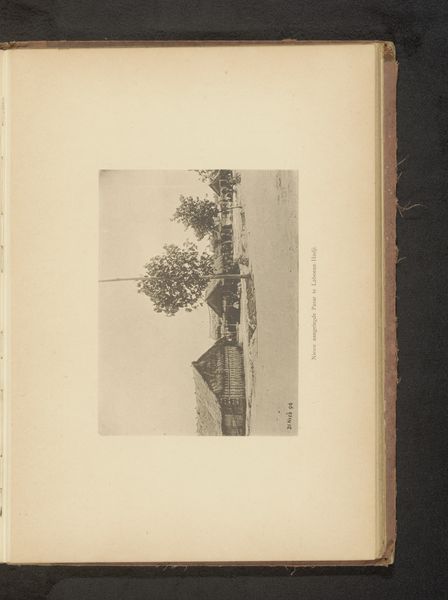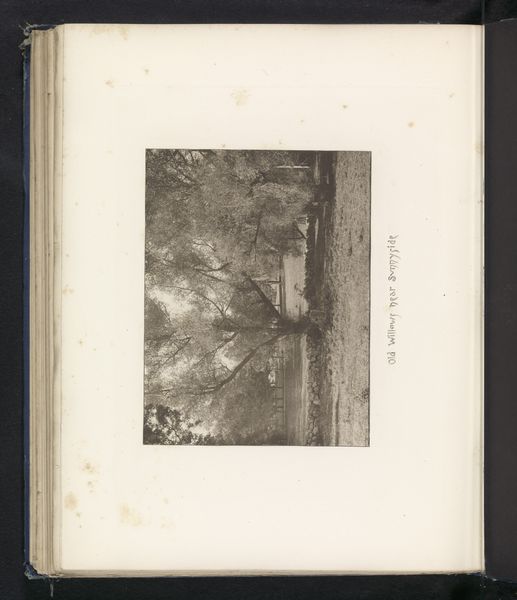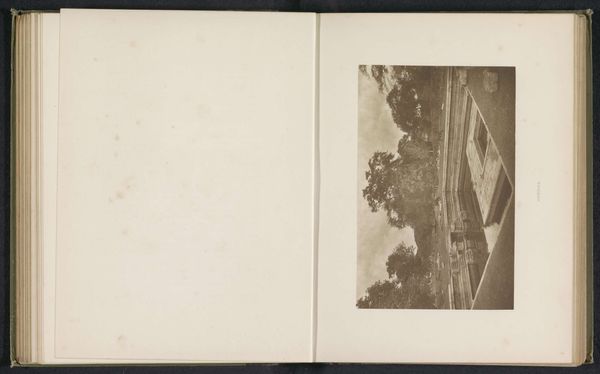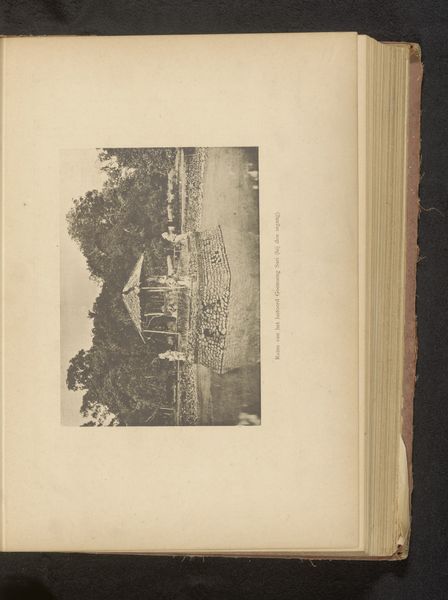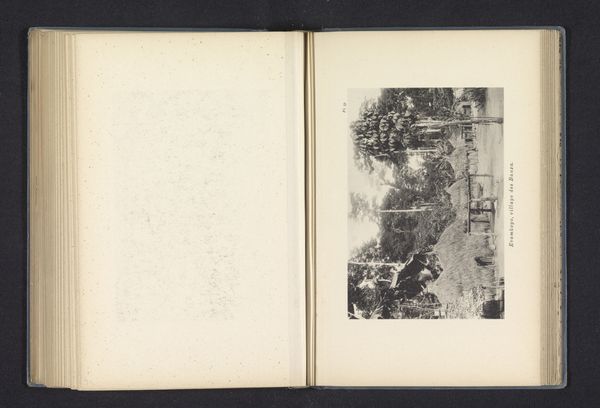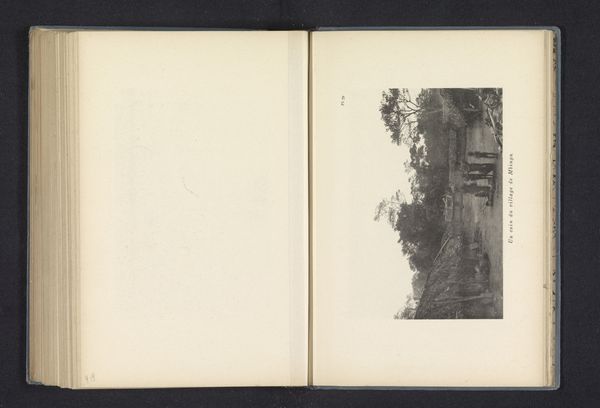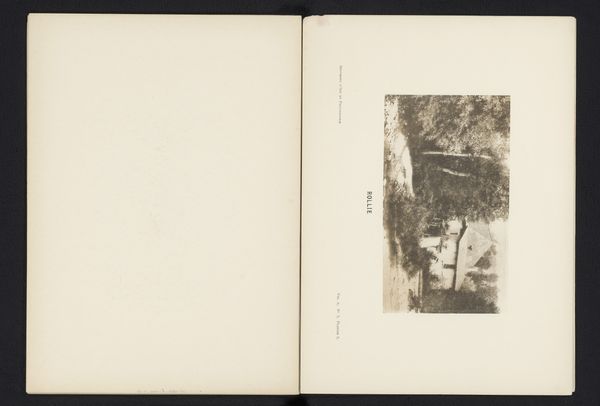
Gezicht op een watermolen te Sleepy Hollow en een boot langs een rivier before 1887
0:00
0:00
print, photography, albumen-print
#
pictorialism
# print
#
landscape
#
photography
#
albumen-print
Dimensions: height 183 mm, width 201 mm
Copyright: Rijks Museum: Open Domain
Curator: Here we have a photographic print, specifically an albumen print titled "Gezicht op een watermolen te Sleepy Hollow en een boot langs een rivier", which translates to "View of a Watermill at Sleepy Hollow and a Boat Along a River." It's attributed to J.L. Williams, dating from before 1887. Editor: It has a melancholy feel, doesn't it? That sepia tone lends a sense of nostalgia, and the soft focus gives the scene a dreamlike quality. The mill seems to emerge from the misty trees like a phantom. Curator: The softness aligns with Pictorialism, a late 19th-century movement emphasizing artistic effect over documentary accuracy in photography. These photographers were often concerned with legitimizing photography as an art form, mimicking painting styles and aesthetics. Editor: And the watermill, what does it represent here? Mills are potent symbols. Is it the passage of time? Perhaps the relentless nature of industry encroaching upon nature's tranquility? The Sleepy Hollow connection definitely hints at something haunted and evocative. Curator: I think it definitely plays on the rural idyll. Mills like this were at the center of a local economy, shaping community, but also, eventually, sites that faced redundancy through modernization. It's a view back towards simpler times and perhaps even to times of localism. Editor: There's also a strong Romantic aspect to the scene. The composition guides our eye, starting with the light reflecting off the water and then drawing us to the dark mass of trees around the building. This is no dry depiction, and evokes feelings and connections above just the facts. Curator: You see here also in the layout an integration of text directly into the photograph presentation, a move toward accessibility, or in the tradition of a personal journal as the texts were personal statements and sayings. It served also to authenticate, to guarantee or witness the authenticity of the depicted setting. Editor: It gives this impression of being discovered in some forgotten attic—a tangible link to a vanished past. These visual fragments create a haunting tale on their own. It encourages you to almost go back and seek what time might hide behind this watermill. Curator: The integration with other photographic moments points to a certain sensibility, a cultural perspective and attitude worth investigating more, because of this rich network of traces. Editor: It does offer a powerful visual story about industry and nature, then and now, told through its symbols.
Comments
No comments
Be the first to comment and join the conversation on the ultimate creative platform.
